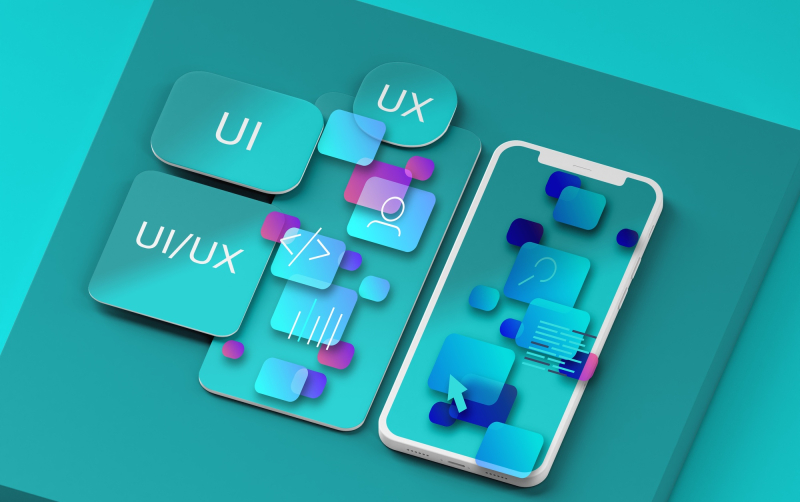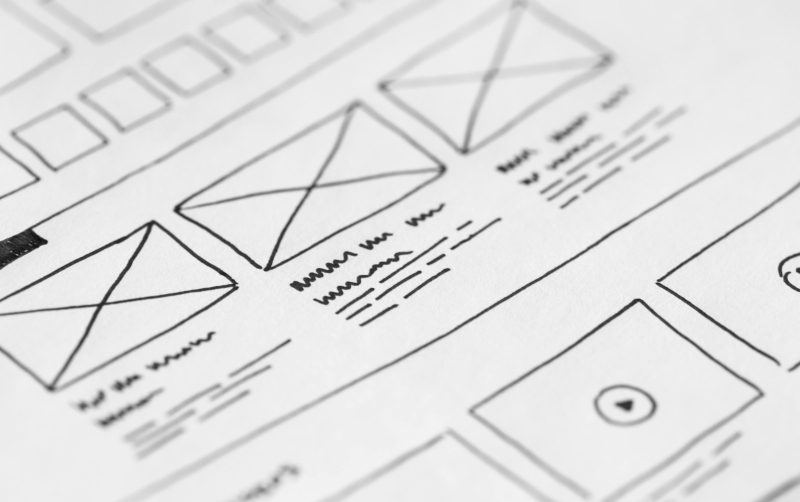Key Changes in UI/UX Design in Recent Months

1. The Ascent of Generative AI in UX Craftsmanship
Generative AI has transcended its auxiliary role, becoming an indispensable force in the UI/UX domain, streamlining workflows and refining design ingenuity.
Notable Features:
- Cutting-edge AI utilities such as Adobe Firefly and Figma AI expedite layout formation, generate intricate design permutations, and refine graphical embellishments.
- Algorithm-driven analytical systems scrutinize user engagement patterns, furnishing data-backed optimization suggestions.
Implications: By offloading monotonous tasks to AI, designers can channel their expertise into innovative conceptualization and strategic problem-solving.
2. Hyper-Personalized Digital Journeys
Interfaces are evolving to exhibit heightened adaptability, molding themselves to individual user inclinations, habitual interactions, and contextual triggers.
Manifestations:
- Dynamic UI frameworks that morph in real-time based on user behavior.
- Bespoke onboarding sequences and precision-targeted content recommendations.
Significance: Tailored digital experiences enhance user retention, cultivating a sense of exclusivity and intuitive engagement.
3. Immersive Realms: 3D, AR, and VR Integration
The UI/UX frontier is embracing augmented and virtual reality, enhancing interactivity through spatial and sensorial engagement.
Key Transformations:
- Widespread incorporation of 3D elements to enable intricate product visualization, particularly within e-commerce ecosystems.
- AR/VR-powered applications permeating industries such as retail, real estate, and gaming, redefining user immersion.
Consequences: This paradigm shift blurs the demarcation between digital and tangible realms, fostering enriched user interactions.
4. Accessibility & Inclusivity as Design Pillars
Accessibility is no longer a secondary consideration but an integral component of modern UI/UX design philosophies.
Emerging Practices:
- High-contrast visual themes, voice-enabled navigation, and AI-driven text-to-speech capabilities.
- Specialized tools such as Stark and Axe facilitating adherence to WCAG compliance standards.
Why It Matters: Inclusive design extends the reach of digital experiences, ensuring usability across diverse demographics and physical capabilities.
5. Nostalgic Aesthetic Renaissance
A resurgence of retro-inspired design aesthetics, reminiscent of the late 90s and early 2000s, is rekindling sentimental engagement.
Characterizing Elements:
- Vivid gradients, pixelated typographies, and bold, eye-catching text styles.
- Playful, whimsical animations evocative of vintage gaming experiences.
Impact: This aesthetic revival fosters emotional resonance, particularly among millennial and Gen Z audiences, invoking digital nostalgia.
6. Microinteractions Elevating UX Fluidity
Subtle yet impactful animations, or microinteractions, are playing an instrumental role in refining user experiences.
Illustrations:
- Hover-sensitive button animations, kinetic loading sequences, and real-time task completion feedback.
- Haptic feedback integration in mobile applications, enhancing tactile interactivity.
Why It Works: Microinteractions enrich usability by making interfaces feel intuitive, responsive, and engaging.
7. Minimalism Reimagined: Depth & Dimensionality
Minimalist design principles are undergoing an evolution, veering away from sterile flat aesthetics towards a more nuanced, textured approach.
Distinguishing Traits:
- Soft gradient overlays, layered compositional elements, and delicate shadowing to create depth perception.
- The adoption of neumorphism (soft UI), adding a tactile, tangible quality to interfaces.
Effect: These refinements preserve the essence of simplicity while injecting greater visual intrigue and dimensionality.
8. Eco-Conscious UX Strategies
Sustainability is gaining prominence within UI/UX design, promoting eco-friendly digital interactions.
Green Design Tactics:
- Websites engineered for optimized energy efficiency and lower carbon footprints.
- Interface elements encouraging sustainable consumer behaviors, such as eco-conscious product suggestions or carbon footprint calculators.
Why It’s Crucial: Aligning with ecological values fortifies brand reputation and resonates with environmentally mindful users.
9. Motion Design as a Core UX Mechanism
Animations have transcended mere embellishment, evolving into functional elements that streamline navigation and storytelling.
Key Innovations:
- Seamless page-state transitions enhancing navigational fluidity.
- Motion-based storytelling techniques, such as animated onboarding experiences, improving user orientation.
Impact: Dynamic motion design enhances engagement, creating a fluid and captivating UX.
10. The Rise of Super-Apps & Unified Digital Ecosystems
The emergence of super-apps—platforms amalgamating multiple services within a single interface—is reshaping UI/UX dynamics.
Design Priorities:
- Intuitive navigation frameworks for multi-functional platforms.
- Modular interfaces empowering users to customize their app experience.
Why It Matters: Super-apps address the demand for streamlined convenience, necessitating a delicate equilibrium between feature abundance and intuitive simplicity.
11. Real-Time Collaboration as a UX Imperative
With remote and hybrid work models becoming entrenched, collaboration-centric UI/UX enhancements are proliferating.
Noteworthy Developments:
- Synchronous co-editing functionalities embedded within design tools like Figma and Miro.
- Interface elements tailored for real-time feedback integration and task coordination.
Effect: These refinements optimize productivity, fostering seamless, distributed teamwork.
12. The Evolution of Voice & Gesture Interfaces
Voice-driven and gestural interactions are permeating digital interfaces, redefining accessibility and hands-free usability.
Emerging Trends:
- AI-enhanced voice commands for navigation and search functions, particularly in e-commerce and productivity ecosystems.
- Gesture-controlled interfaces facilitating contactless interactions.
Significance: These advancements augment accessibility, ushering in futuristic, intuitive user engagements.
13. UX Design Converging with Data Privacy Prioritization
Heightened consumer consciousness surrounding data privacy is prompting UI/UX designers to embed transparency-driven features.
New Privacy-Focused UI Elements:
- Unambiguous, consent-driven data collection dialogs ensuring user autonomy.
- Privacy-centric dashboards enabling granular control over personal data permissions.
- Security-forward design elements, such as visual encryption indicators and intuitive privacy toggles.
Why It’s Essential: Prioritizing privacy safeguards compliance with global regulations and engenders consumer trust.
Conclusion: The UI/UX Horizon
The landscape of UI/UX design has entered a new epoch, underscored by hyper-personalization, immersive interactivity, and ethical design paradigms. From the integration of generative AI and sustainability-centric UX to the advent of super-apps and real-time collaborative ecosystems, these evolutionary currents highlight the mounting intricacy of digital engagements. By assimilating these trends, enterprises can craft transformative user experiences that resonate with contemporary digital audiences, ensuring both functionality and engagement in an ever-expanding technological terrain.






